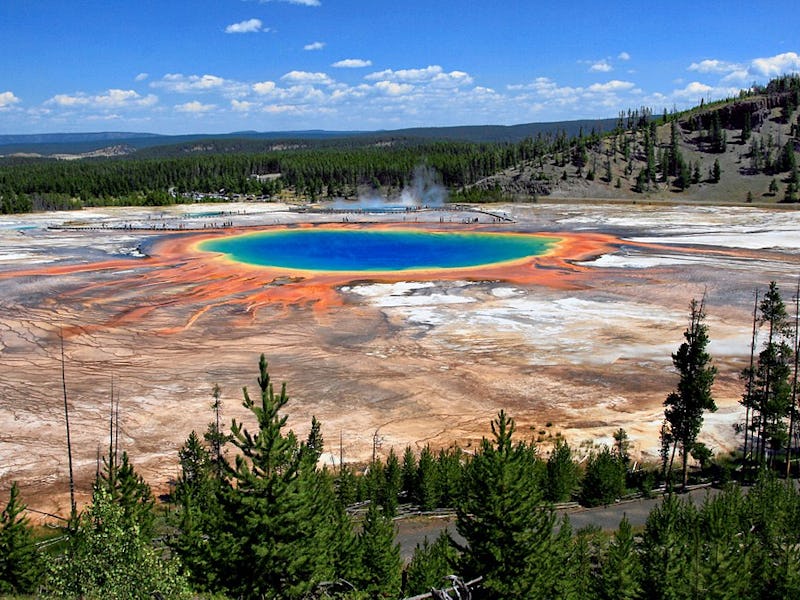New Maps Show How Badly US National Parks Are Ravaged by Climate Change
America's most extraordinary environments just can't take the heat.

In Montana’s Glacier National Park, the glaciers are melting. Likewise, in California’s Joshua Tree National Park, the Joshua trees are dying. There’s no question human-driven climate change is transforming the world for the worst, but a report released Monday shows that some places have it worse than others. In the United States, it appears that the national parks, the country’s crown jewels, are bearing the brunt of climate change relative to the rest of the country.
In the study, published in Environmental Research Letters, scientists from the University of California, Berkeley and the University of Wisconsin-Madison show that temperatures in the national parks increased by 33.8 °F from 1895 to 2010. That’s twice the rate of the warming experienced in the US as a whole. This analysis, the first to quantify the magnitude of climate change on all 417 parks, also showed that yearly rainfall decreased more in the parks than in other regions of the country. In national parks, early rainfall totals decreased by over 12 percent, whereas the decrease was only three percent in the rest of the country.
The parks’ spectacular beauty makes them particularly vulnerable to the effects of climate change. Extraordinary ecosystems, like high-alpine mountains and arid deserts, are generally more vulnerable.
“National parks aren’t a random sample — they are remarkable places and many happen to be in extreme environments,” lead author and UC Berkeley associate adjunct professor Patrick Gonzalez, Ph.D. says. “Many are in places that are inherently more exposed to human-caused climate change.”
Gonzalez and his colleagues examined monthly data on temperature and rainfall, gathered from weather stations throughout the US that have done this work since 1895. The data — covering all 50 U.S. states, the District of Columbia, and four territories in the Caribbean and Pacific — was used to create maps averaging the annual temperature and rainfall totals in these regions. The maps showed that national parks were hotter and had less rainfall compared to the rest of the country. In particular, Alaska and its national parks had the highest increase in temperature, whereas rainfall decreased the most in Hawaii.
A map of average annual temperature totals at points approximately 800 meters apart in the United States.
In addition to showing the changes that have already taken place, the maps also offered a worrying glimpse into the future of American temperature and precipitation. At the current rate of emissions, the maps suggest that temperatures in most of the national parks could rise by 16 °F by 2100.
If the country renews its commitment to the Paris Agreement’s goal of keeping global temperature rise this century below 2 °C (3.6 °F) above pre-industrial levels, the team says we could limit that rise by about 4 °C.
“It is important to note that even if we really do a strong mitigation of greenhouse gases, the national park system is still expected to see a 2-degree [Celsius] temperature change,” co-author and geography professor John Williams, Ph.D. said.
A map representing average annual rainfall totals.
The rapid rate of change in temperature and rainfall level will have drastic consequences on the flora and fauna of the parks. Things are changing at a rate so fast that that many small mammals and plants simply don’t have time to escape to more hospitable climates, the team writes. In Yosemite, for example, the pika population is already in danger of extinction because of warming temperatures are inundating their mountainside habitats. Climate change is also spurring a longer fire season in the parks; this summer a wildfire in Glacier National Park prompted closures and evacuations.
Luckily, park service employees are already integrating these new maps into their climate change mitigation planning and resource management. The effects of climate change are already changing the parks, but with up-to-date data, at least scientists can prepare for the future.